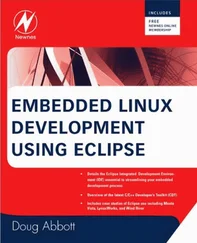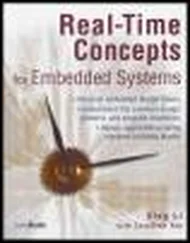linux-2.6.14/drivers/net/fec_mpc52xx/fec_phy.h
linux-2.6.14/include/asm-ppc/mpc52xx.h
The first file is the default configuration, which enables a quick kernel configuration based on defaults. It is enabled by invoking make as follows:
$ make ARCH=ppc CROSS_COMPILE= powerdna_defconfig
We've already discussed the changes to the Kconfig file. Modification to the makefile is trivialthe purpose is to add support for the new kernel configuration based on CONFIG_POWERDNA. The change consists of adding a single line:
obj-$(CONFIG_POWERDNA) += powerdna.o
The heart of the changes come in the powerdna.[c|h] files and changes to the FEC (Fast Ethernet Controller) layer. There were minor differences between powerdna.c and lite5200.c, the file from which it was derived. Two primary issues required changes. First, PCI was disabled because it is not used in the PowerDNA design. This required some minor tweaking. Second, the PowerDNA design incorporates an unmanaged Ethernet physical-layer chip that required slight changes in the hardware setup and the FEC layer. This work constituted the majority of the porting effort. The patch file consists of 1120 lines, but the bulk of those lines are the default configuration, which is only a convenience for the developer and is not strictly necessary. Removing that, the patch reduces to 411 lines.
16.4.1. Other Architectures
We examined the details of how a given platform fits into the kernel, and the facilities that exist for porting to a new board. Our reference for this chapter and the discussions within came from the PowerPC architecture branch of the kernel. The other architectures differ in many detailed aspects of how various hardware platforms are incorporated, but the concepts are similar. When you have learned how to navigate a single architecture, you have the knowledge and tools to learn the details of the other architectures.
• Porting Linux to a custom board based on a Linux-supported CPU can be relatively straightforward. There is no substitute for experience and knowledge of the Linux code base and your hardware platform.
• Starting from a working reference configuration based on a hardware platform already supported provides an excellent basis for your own modifications.
• Understanding the flow of initialization code is the key to an easy porting effort. We made every effort to leave all generic kernel code untouched and to modify only those files necessary for the platform itself. A significant part of this chapter is devoted to this early flow of control related to platform initialization.
• Make doubly certain that your low-level hardware platform initialization is correct before proceeding. If you find yourself debugging in some obscure part of the Linux slab allocator, for example, it's a good bet you've messed something up with your hardware memory initialization.
• This chapter focused primarily on the PowerPC architecture branch of the Linux kernel. Learning the details of one architecture paves the way for understanding the rest.
16.5.1. Suggestions for Additional Reading
Programming Environments Manual for 32-Bit Implementations of the PowerPC Architecture
MPCFPE32B/AD 12/2001 REV 2
Freescale Semiconductor, Inc.
MPC5200 User's Guide
MPC5200UG Rev 3 01/22005
Freescale Semiconductor, Inc.
Chapter 17. Linux and Real Time
When Linux began life on an Intel i386 processor, no one ever expected the success Linux would enjoy in server applications. That success has led to Linux being ported to many different architectures and used by developers for embedded systems from cellular handsets to telecommunications switches. Not long ago, if your application had real-time requirements, you might not have included Linux among the choices for your operating system. That has all changed with the developments in real-time Linux driven, in large part, by audio and multimedia applications.
In this chapter, we start with a brief look at the historical development of real-time Linux features. Then we look at the facilities available to the real-time programmer and how these facilities are used.
Ask five people what "real time" means, and, chances are, you will get five different answers. Some might even cite some numbers. For the purposes of the discussion to follow, we discuss some scenarios and then propose a definition. Many requirements might be said to be soft real time, while others are called hard real time.
Most agree that soft real time means that the operation has a deadline, but if the deadline is missed, the quality of the experience could be diminished (but not fatal). Your desktop workstation is a perfect example of soft real-time requirements. When you are editing a document, you expect to see the results of your keystrokes immediately on the screen. When playing your favorite .mp3 file, you expect to have high-quality audio without any clicks, pops, or gaps in the music.
In general terms, humans cannot see or hear delays below a few tens of milliseconds. Of course, the musicians in the crowd will tell you that music can be colored by delays smaller than that. If a deadline is missed by these so-called soft real-time events, the results may be undesirable, leading to a lower level of "quality" of the experience, but not catastrophic.
Hard real time is characterized by the results of a missed deadline. In a hard real-time system, if a deadline is missed, the results are often catastrophic. Of course, catastrophic is a relative term. If your embedded device is controlling the fuel flow to a jet aircraft engine, missing a deadline to respond to pilot input or a change in operational characteristics can lead to disastrous results.
Note that the duration of the deadline has no bearing on the real-time characteristic. Servicing the tick on an atomic clock is such an example. As long as the tick is processed within the 1-second window before the next tick, the data remains valid. Missing the processing on a tick might throw off our global positioning systems by feet or even miles!
With this in mind, we draw on a commonly used set of definitions for soft and hard real time. For soft real-time systems, the value of a computation or result is diminished if a deadline is missed. For hard real-time systems, if a single deadline is missed, the system is considered to have failed, and might have catastrophic consequences.
UNIX and Linux were both designed for fairness in their process scheduling. That is, the scheduler tries its best to allocate available resources across all processes that need the CPU and guarantee each process that they can make progress. This very design objective is counter to the requirement for a real-time process. A real-time process must run as soon as possible after it is ready to run. Real time means having predictable and repeatable latency.
Real-time processes are often associated with a physical event, such as an interrupt arriving from a peripheral device. Figure 17-1 illustrates the latency components in a Linux system. Latency measurement begins upon receipt of the interrupt we want to process. This is indicated by time t0 in Figure 17-1. Sometime later, the interrupt is taken and control is passed to the Interrupt Service Routine (ISR). This is indicated by time t1. This interrupt latency is almost entirely dictated by the maximum interrupt off time [115] We neglect the context switching time for interrupt processing because it is often negligible compared to interrupt off time.
the time spent in a thread of execution that has hardware interrupts disabled.
Читать дальше












